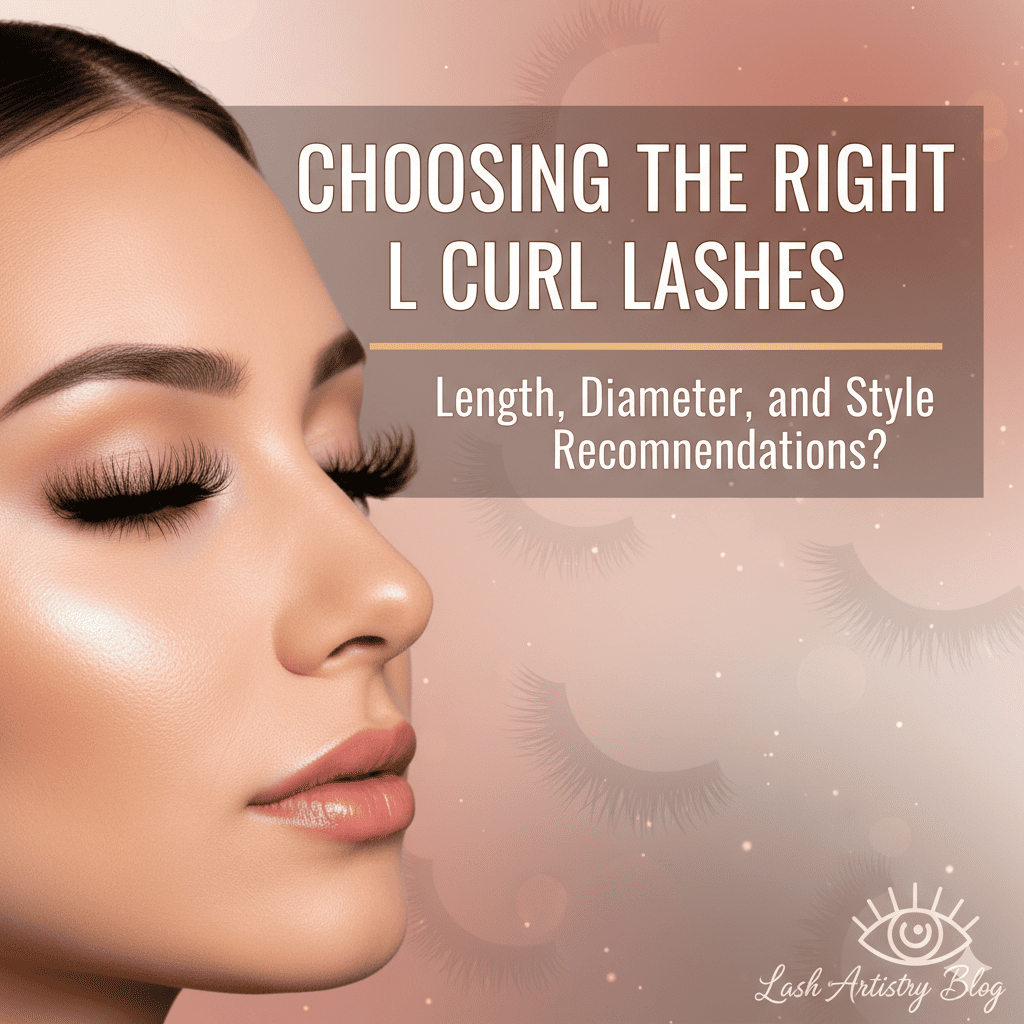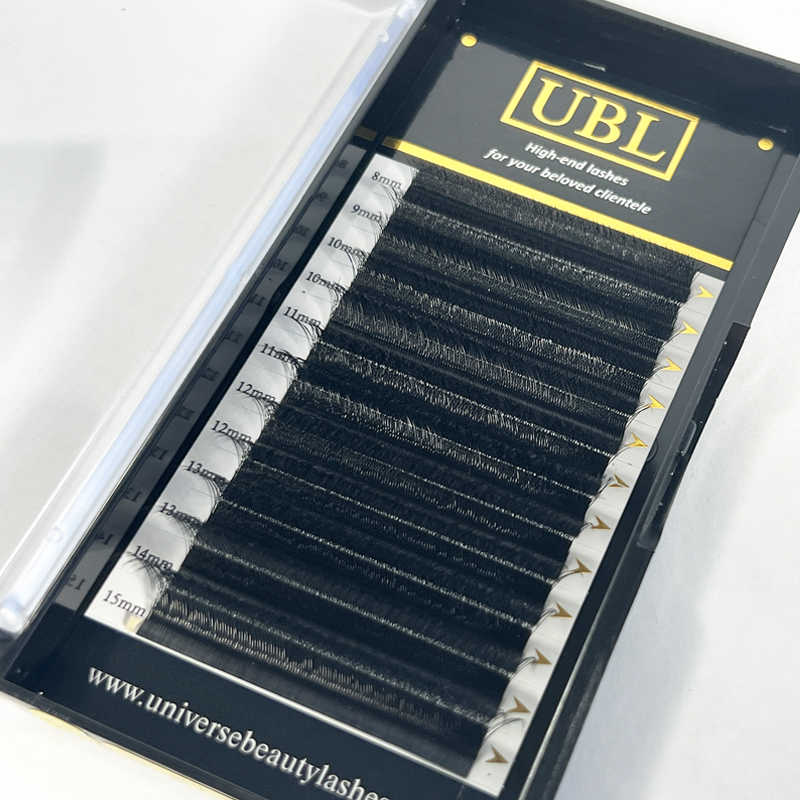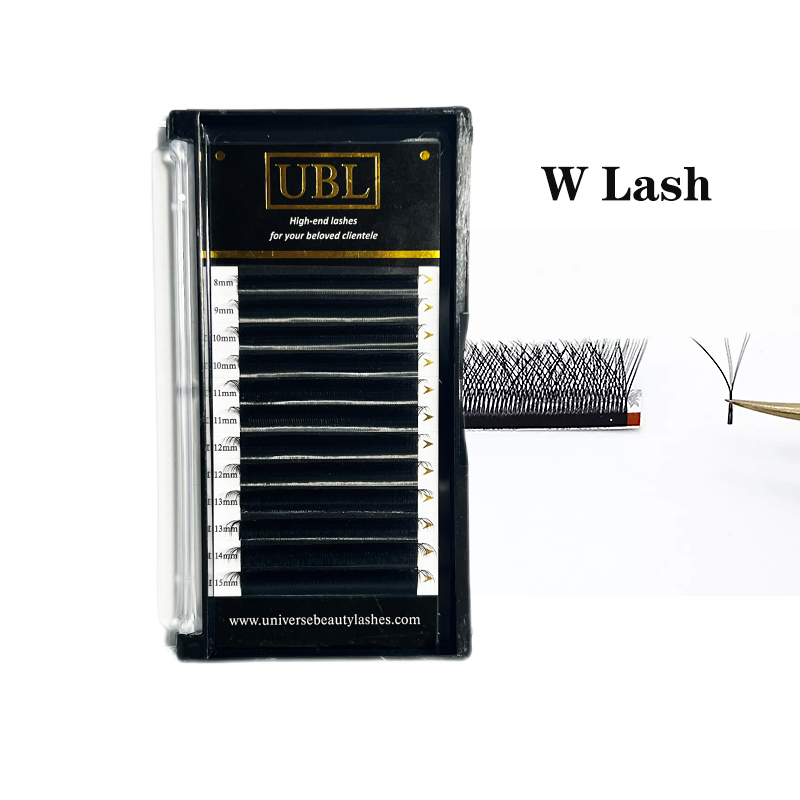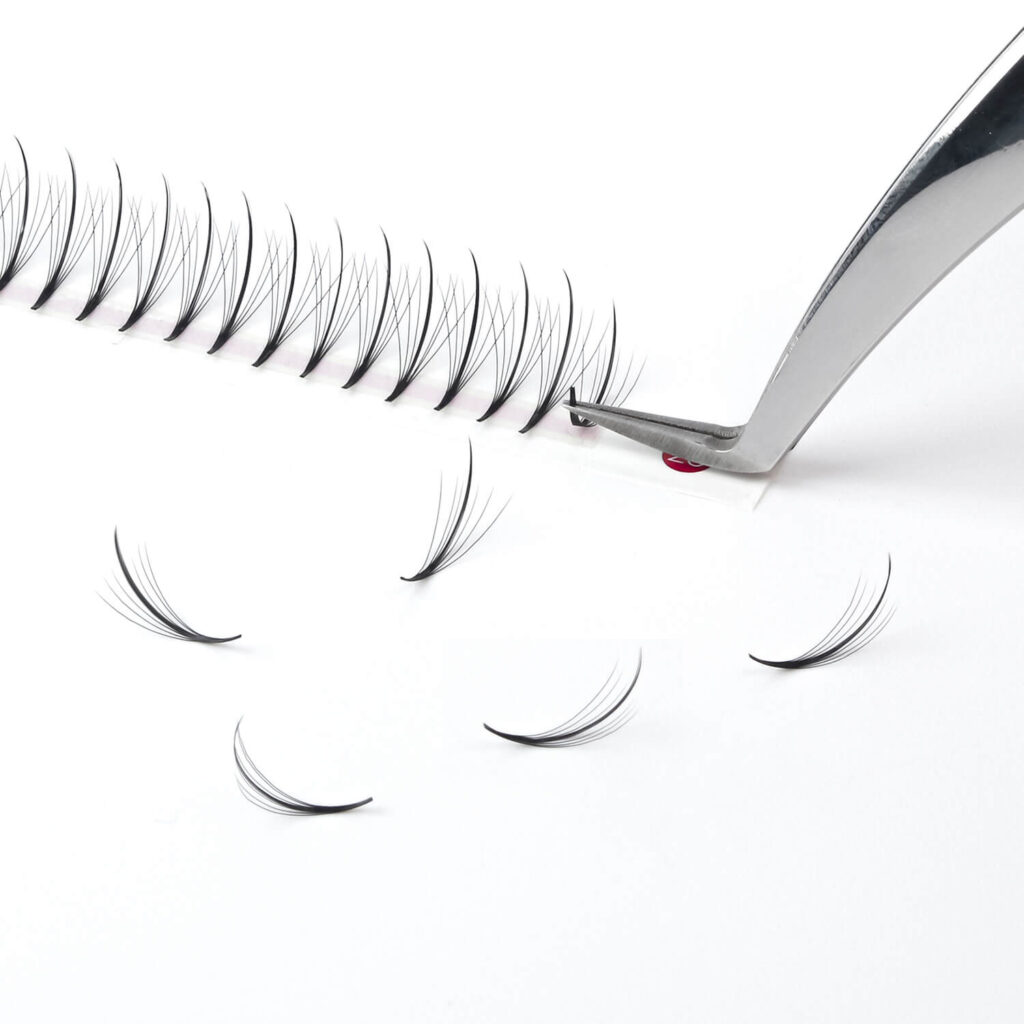Tempted by that incredibly low price on a lash tray? You worry that cheap lashes might look plastic, lose their curl, and frustrate your lash artists, ultimately damaging your brand’s reputation.
The key differences lie in the raw material, curl consistency, the lash strip itself, and ease of use. High-quality trays use superior Korean PBT for a soft matte finish and stable curl, while cheap trays often use inferior, shiny plastic with inconsistent curls.
It’s a question I get all the time from brand owners like Sophie. They see a supplier offering lash trays for a price that seems too good to be true, and they ask me, "Fanny, what’s the catch?" The truth is, there’s always a catch. While photos can look similar, the real-world performance difference is huge. To show this, I decided to do a little experiment. I went online and bought a generic, low-cost lash tray and put it in a head-to-head test against one of our own UBLash professional trays. Let’s break down exactly what I found, side-by-side.
How Does Curl Consistency Impact a Finished Lash Set?
You’ve spent hours creating a perfect, uniform lash set. But your client returns for a fill, and their lashes are pointing in every direction. The beautiful D curl you applied has relaxed into a messy C.
Quality trays ensure curl consistency through a double heat-setting process. This locks in the shape permanently. Cheap lashes use a single, unstable heating method, causing curls to relax and straighten when exposed to humidity or heat.
Dive Deeper: The Curl Stability Test
For this test, the difference was immediately visible, even before applying the lashes. I laid a strip from our UBLash tray next to the cheap tray. The UBLash strip had a perfectly uniform curve from one end to the other. Every single fiber was identical. The cheap strip, however, had noticeable variations. Some lashes were slightly more open, others slightly more curled. This inconsistency is a red flag for any lash artist.
The real test, however, is what happens over time. At UBLash, we use a complex, dual-heat treatment on our premium Korean PBT fibers. This process bakes the curl into the fiber’s memory, making it resistant to water, steam, and daily wear. The cheaper lashes simply don’t have this. To simulate this, I spritzed both lash strips with warm water and let them dry. The UBLash curl remained unchanged—it looked exactly the same. The cheap lashes visibly drooped. The curl relaxed by at least one full grade. Imagine this happening on a client’s eyes. It leads to unhappy customers and a reputation for low-quality work, all because the initial product wasn’t stable.
| Feature | Quality Lash Tray (UBLash) | Cheap Lash Tray |
|---|---|---|
| Manufacturing | Double heat-set for permanent curl memory. | Single, inconsistent heat process. |
| Appearance | Every lash has a uniform, identical curl. | Visible inconsistencies and irregularities. |
| Performance | Curl holds its shape for 4-6 weeks, even with exposure to moisture. | Curl visibly relaxes and droops, often within the first week. |
| Client Impact | Lash sets look neat, uniform, and professional until the next fill. | Lash sets quickly look messy, leading to client complaints. |
What Makes the Lash Fiber and Finish Different?
Your client wants a soft, fluffy, luxurious set of lashes. You open a new tray, and the lashes look stiff, shiny, and almost like plastic. They feel heavy and unnatural.
The best lash trays use 100% premium Korean PBT fiber. This material is lightweight, flexible, and has a deep, matte black color. Cheaper trays use lower-grade plastic materials that are shinier, stiffer, and less comfortable for the wearer.
Dive Deeper: The Touch and Feel Test
This is where the difference is undeniable. When you are building a premium brand, the raw materials are everything. I touched the lashes on both trays. Our UBLash fibers are incredibly soft and flexible to the touch, and they have a rich, deep black color with a matte finish. This matte finish is critical because it absorbs light, creating a darker, fuller-looking lash line without any artificial-looking gloss. They feel almost weightless.
Then I touched the fibers on the cheap tray. The difference was stark. They were noticeably stiffer and had a distinct, unnatural shine. When light hit them, they reflected it, which is a tell-tale sign of a cheap plastic blend, not pure PBT. This shine can make a finished lash set look fake and "plasticky." Furthermore, this stiffness makes the lashes less comfortable for the end client. They are more likely to feel the extensions on their eyelids. For a brand owner like Sophie, choosing the right material is non-negotiable. Her clients pay for a premium experience, and that starts with a fiber that looks and feels luxurious, not like something from a craft store.
| Attribute | Quality Lash Fiber (Korean PBT) | Cheap Lash Fiber (Plastic Blend) |
|---|---|---|
| Material | 100% Virgin Korean PBT | Unspecified, lower-grade plastic polymers. |
| Finish | Deep, matte black. Absorbs light for a fuller look. | Noticeable sheen or gloss. Reflects light, looking unnatural. |
| Texture | Extremely soft, flexible, and lightweight. | Stiff, rigid, and heavier. |
| Wearer Comfort | Client barely feels them. They mimic natural lashes. | Can feel uncomfortable or "pokey" on the eyelid. |
Why Does the Lash Strip Matter So Much to Artists?
Your lash artist is frustrated. Every time they peel a lash strip off the tray, it leaves behind a sticky, white paper mess on their tile. They waste precious time cleaning up instead of lashing.
Premium lash trays use foil-backed strips that peel off cleanly every single time. Cheap trays use paper-backed strips that tear, leave a sticky residue, and cannot be re-stuck, disrupting a lash artist’s workflow.
Dive Deeper: The Peel Test
This is a small detail that makes a massive difference in a lash artist’s daily life. A professional artist’s speed and efficiency are key to their income. Anything that slows them down is a problem. In my side-by-side test, I first peeled a strip from the UBLash tray. It came off the card with zero effort and no tearing. The back was a clean, silver foil. I stuck it onto a lash tile, then easily peeled it off again and re-stuck it. No residue, no problem. This is exactly what artists need.
Then, I tried to peel a strip from the cheap tray. It was immediately a struggle. The paper backing started to tear. When I finally got it off, it left a swath of white, fuzzy paper and sticky glue on the main card. Then, when I tried to stick it to my lash tile, it stuck so aggressively that I knew removing it would be a chore. This is a workflow killer. Artists cannot work with a product that creates more work for them. As a brand owner, providing your artists with foil-backed strips is a sign that you understand and respect their craft. It’s a hallmark of a professional-grade product.
Can You Really Create a Perfect Volume Fan with Cheap Lashes?
Your artist is trying to create a 5D volume fan. They isolate the lashes, but the fan falls apart. The bases are thick and chunky, and the lashes won’t spread evenly. Sound familiar?
No, it’s nearly impossible. Quality lashes are arranged perfectly on the strip with minimal bonding at the base, allowing them to fan out easily. Cheap lashes often have too much adhesive on the strip, making the bases thick and preventing a clean spread.
Dive Deeper: The Fanning Test
This is the ultimate performance test. If a volume lash can’t fan, it’s useless. I took my volume tweezers and started with the UBLash tray. I used the "pinching" method and was able to create a wide, symmetrical 5D fan on the first try. The bases were thin and pointed, exactly what you want for a seamless bond. The lashes spread open like butter.
Then I moved to the cheap tray. It was a completely different story. There was so much adhesive holding the lashes to the strip that it was difficult to pick them up cleanly. When I did, a little chunk of glue came with them, creating a thick, clumsy base. When I tried to fan them, they didn’t want to spread. They stayed in a clump. The fans I did manage to make were inconsistent and heavy at the bottom. An artist would waste dozens of lashes just trying to get one usable fan. This wastes product, time, and money. For a lash trainer or salon owner, providing lashes that fan effortlessly is crucial for both student success and service quality. This test proved that "cheaper" trays would actually cost more in wasted product and time.
Conclusion
The price tag on a cheap lash tray is tempting, but the true cost is paid in poor results, artist frustration, and unhappy clients. Investing in quality is investing in your brand’s reputation.

Fanny
Lash Technician
Hi, I’m Fanny, the author of this post.
Over the past 5 years, we have assisted numerous lash salons and technicians across 20 countries to build their lash brand and grow their businesses with high-quality lash extension products.
If you have any questions or need assistance, feel free to reach out for a free consultation or to discuss tailored solutions for your business needs.
More Interesting Posts
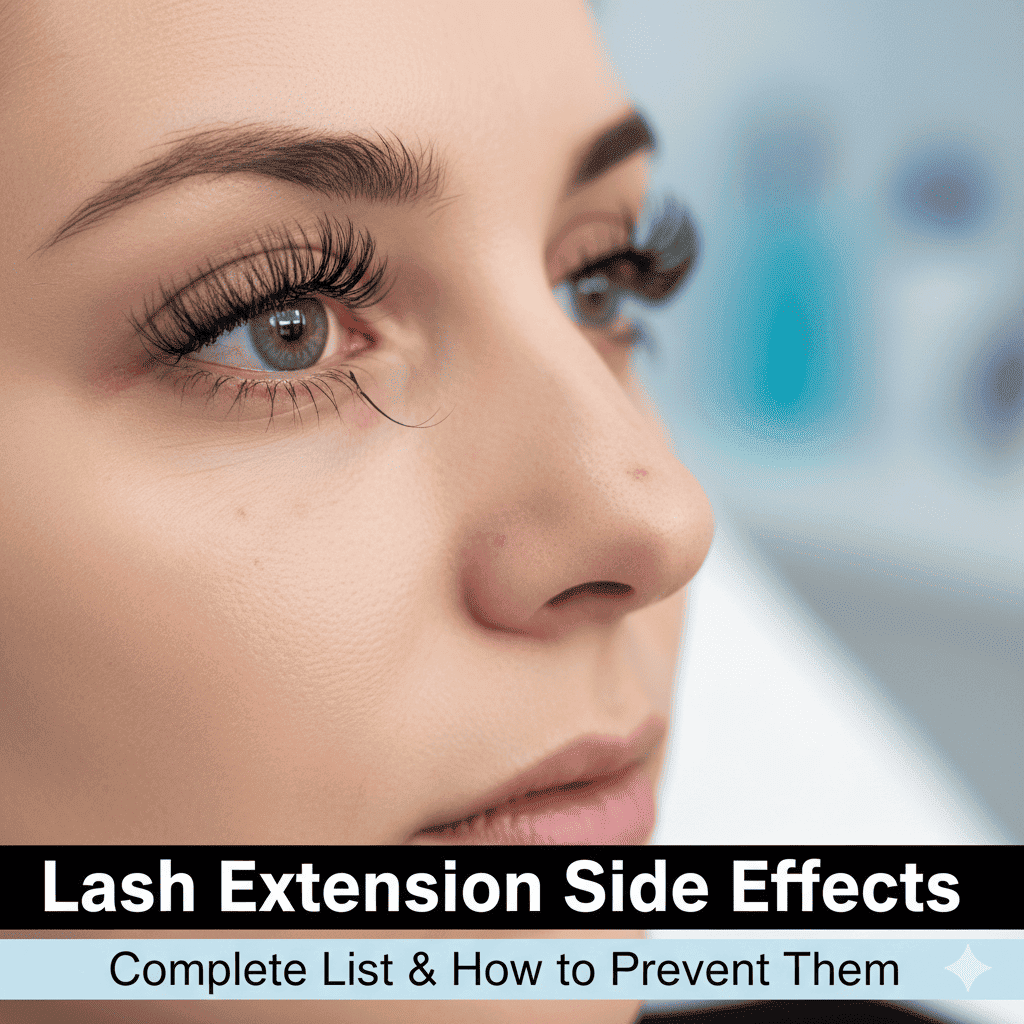
Lash Extension Side Effects: Complete List & How to Prevent Them
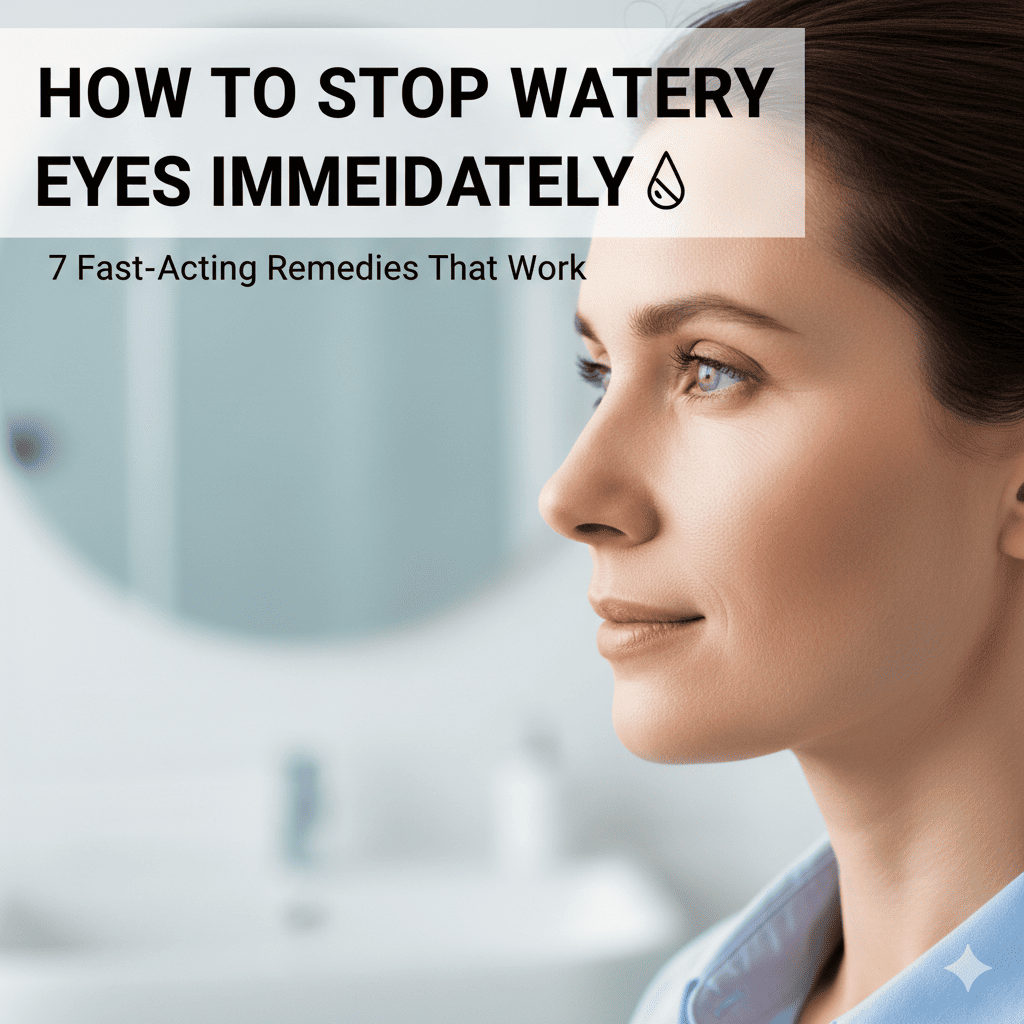
How to Stop Watery Eyes Immediately: 7 Fast-Acting Remedies That Work
